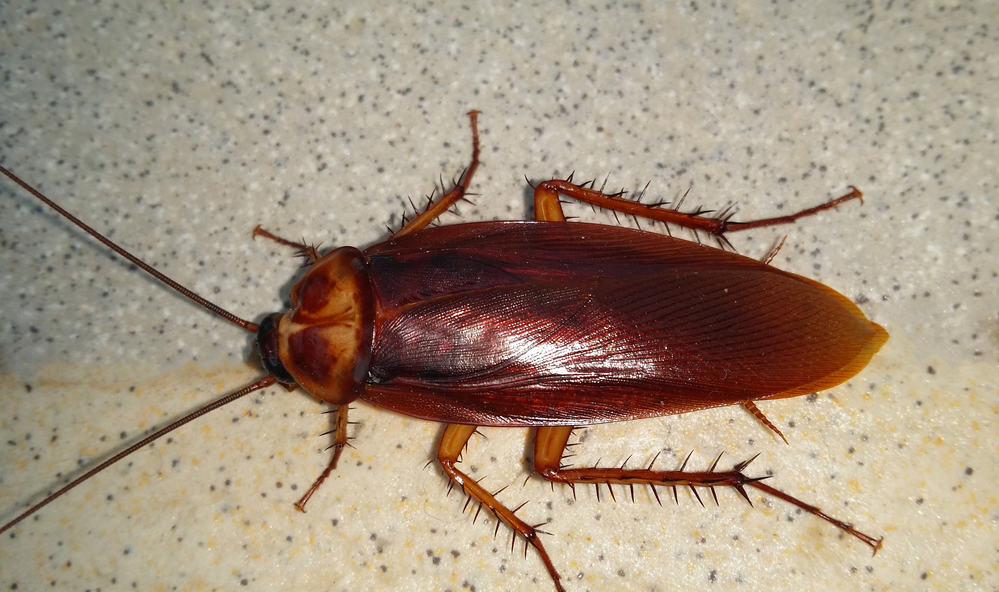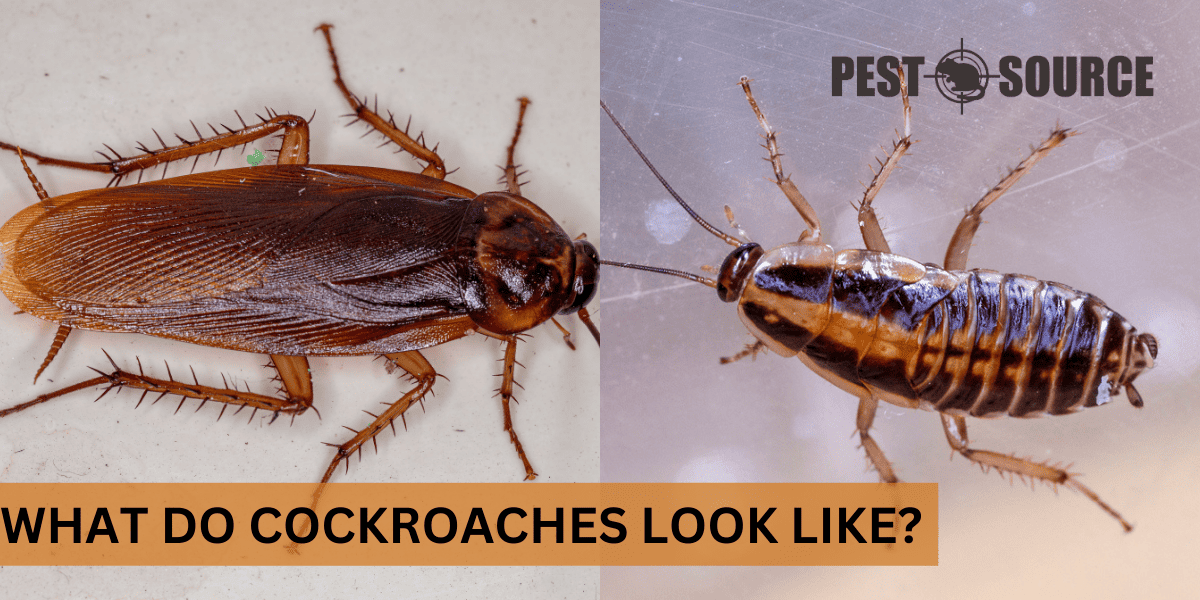Cockroaches typically have a flattened oval shape, long antennae, and six legs, with variations in size and color among species. This guide provides visual descriptions and images to help identify common cockroach species.
POINTS
- Cockroaches have a flattened oval body, long antennae, and typically range in size from about 0.7 inches to 3 inches long, with coloration from light brown to reddish-brown or black.
- They possess six legs with spines and claws for climbing and navigation, and their strong hindlegs contribute to their reputation as one of the fastest-moving insects.
- Accurate identification of cockroaches is essential for control, distinguishing them from other insects by their oval-shaped body, long antennae, and the distinctive odor they can produce.
- The cockroach lifecycle consists of three stages—egg, nymph, and adult—with the appearance changing significantly at each stage and the duration varying by species.
- Common terms for cockroaches include “roach” and “cockroach,” and while there are over 4,000 species worldwide, only a few are considered pests, with regional names sometimes differing.
Detailed Description of Cockroaches
Cockroaches are one of the most common and resilient pests found in homes and businesses worldwide. Their general appearance is characterized by a flattened oval body, long antennae, and a rapid scuttling movement. Adult cockroaches can vary in size from about 0.7 inches to 3 inches long, with coloration that typically ranges from a light brown to a dark, reddish-brown or black hue.
What Do House Roaches Look Like?
House roaches, particularly the German cockroach and the American cockroach, are the species most commonly encountered in domestic settings.
The German cockroach is smaller, typically light brown with two dark stripes on its pronotum, the shield-like structure behind its head.

In contrast, the adult American cockroach is larger and darker, with a reddish-brown color and a yellowish figure-8 pattern on the back of its head.

What Color Is a Cockroach?
The color of a cockroach can be a significant identifier. Most roaches display earthy tones that aid in their camouflage within their environment. Colors can range from pale brown in juvenile stages to a deeper brown or reddish-brown in adults. Some species, like the smoky brown cockroach, have a more uniform dark brown or mahogany coloration.
Anatomy and Physical Characteristics
Cockroaches are known for their robust and adaptable anatomy, which contributes to their survival in various environments.
How Many Legs Do Roaches Have?
Like all insects, roaches have six legs. Each leg is equipped with spines and claws that allow them to climb and navigate through different terrains. Their legs are also incredibly strong, enabling them to run at high speeds and making them one of the fastest-moving insects.
Cockroach Legs and Body Structure
The legs of a cockroach are attached to their thorax and are divided into three pairs: the forelegs, midlegs, and hindlegs. The hindlegs are particularly powerful and are the primary source of their speed. The body structure of a cockroach is segmented into three parts: the head, thorax, and abdomen, with the head bearing their long, whip-like antennae and the thorax covered by a hard exoskeleton that provides protection and support.
Unique anatomical features such as their ability to compress their bodies and the presence of cerci, sensory organs at the end of their abdomen, aid in their survival. These cerci are sensitive to air currents, alerting them to potential threats and allowing them to react quickly.
Identifying Cockroaches: Recognition and Misconceptions
Identifying a cockroach correctly is crucial for effective pest control. Key features that distinguish them from other insects include their oval-shaped body, long antennae, and the distinctive odor they can produce.
What Does a Cockroach Look Like?
A cockroach typically has a glossy exoskeleton and can be identified by its two large compound eyes, which give them a wide field of vision. They also have a pair of long, segmented antennae that they use to navigate and detect food.
Misconceptions and Common Errors in Identification
One common error is confusing cockroaches with beetles, which may have a similar shape but have hard wing covers and are not as flattened as cockroaches. Additionally, some people mistake crickets for cockroaches because of their similar coloring, but crickets have elongated hind legs for jumping, which roaches lack.
To better understand what a cockroach looks like up close, it’s helpful to examine close-up images that show their spiny legs, antennae, and the texture of their exoskeleton. These detailed features are often overlooked but are essential for accurate identification.
Lifecycle and Developmental Stages
Understanding the lifecycle of cockroaches is essential for effective pest control, as their appearance changes significantly from nymph to adult.
Cockroach Lifecycle
The lifecycle of a cockroach includes three stages: egg, nymph, and adult. The female cockroach produces an egg case, known as an ootheca, which contains multiple eggs. After the eggs hatch, the emerging nymphs resemble small, wingless versions of the adult cockroaches.
Developmental Changes from Nymph to Adult
As nymphs grow, they undergo a series of molts, shedding their exoskeleton to allow for further growth. With each molt, nymphs gradually develop the characteristics of adult cockroaches, such as wings and more pronounced coloration. The transition to an adult cockroach can take from several weeks to over a year, depending on the species and environmental conditions.
Duration of Each Stage and Impact on Appearance
The duration of each developmental stage varies among species. For example, the German cockroach can complete its lifecycle in as little as 100 days, while larger species like the American cockroach may take several months to a year to reach adulthood. The physical appearance of cockroaches also changes as they mature, with adults typically being larger and having fully developed wings.
General Overview and Common Terminology
Cockroaches, often simply called “roaches,” are a diverse group of insects with over 4,000 species worldwide, though only a handful are considered pests.
What Are Roaches?
Roaches are insects belonging to the order Blattodea, which also includes termites. They are known for their hardiness and adaptability, which allow them to survive in a wide range of environments, from tropical regions to urban dwellings.
Clarifying Common Names and Terms
The term “cockroach” and the more informal “roach” are used interchangeably to refer to these pests. However, it’s important to differentiate between the different types of cockroaches when discussing pest control, as different types of cockroaches may require different management strategies.
Regional Names and Characteristics
In different regions, cockroaches may be referred to by various names. For instance, in some areas, the American cockroach is colloquially known as the “palmetto bug.” Regardless of the name, the identification and control methods remain consistent—focus on their distinctive features, habitats, and behaviors for accurate identification and effective prevention.



